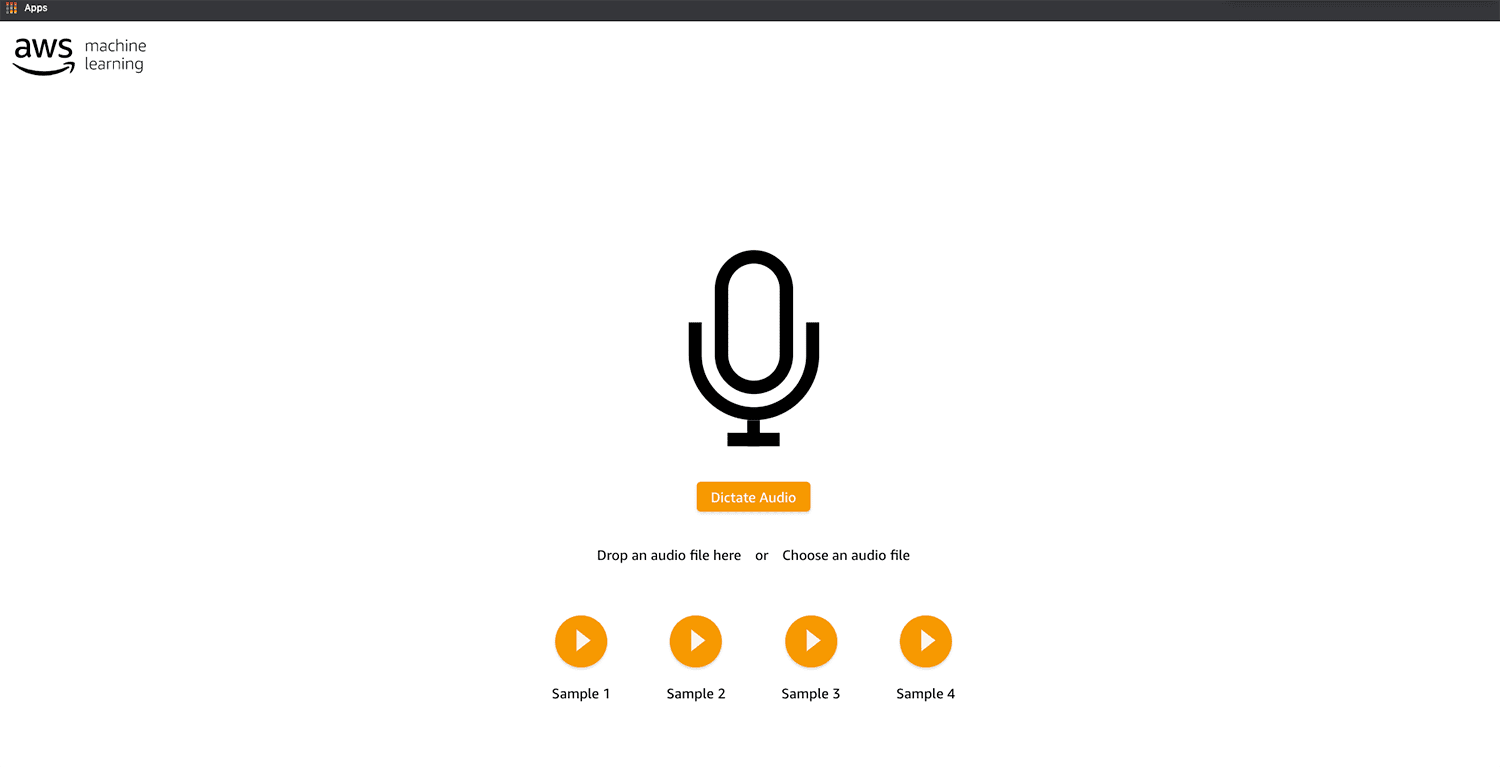Performing medical transcription analysis with Amazon Transcribe Medical and Amazon Comprehend Medical
The healthcare industry is a highly regulated and complex industry where a great deal of information exchange occurs via verbal communication. This audio data can contain valuable information and actionable insights. This post explores how to integrate HIPAA-eligible AWS AI services Amazon Transcribe Medical and Amazon Comprehend Medical to identify insights in this data. Automating medical data extraction and comprehension helps healthcare professionals focus on patient care.
Amazon Transcribe Medical
Amazon Transcribe Medical is a machine learning (ML) service that makes it easy to quickly create accurate transcriptions from medical consultations between patients and physicians. Amazon Transcribe Medical automatically converts the medical and pharmacological terms used in physician-dictated notes, practitioner and patient consultations, and tele-medicine from speech to text for use in clinical documentation applications. For more information, see What is Amazon Transcribe Medical?
Amazon Comprehend Medical
Amazon Comprehend Medical is a natural language processing service that makes it easy to use ML to extract relevant medical information from unstructured text. You can quickly and accurately gather information (such as medical condition, medication, dosage, strength, and frequency), from a variety of sources (like doctors’ notes, clinical trial reports, and patient health records). Amazon Comprehend Medical can also link the detected information to medical ontologies such as ICD-10-CM or RxNorm so downstream healthcare applications can use it easily. For more information, see What is Amazon Comprehend Medical?
Medical Transcription Analysis
Medical Transcription Analysis (MTA) is a simple solution that uses Amazon Transcribe Medical and Amazon Comprehend Medical to provide medical notes transcription and comprehension. The solution opens a WebSocket between the client (browser) and Amazon Transcribe Medical. You use this WebSocket to send the audio from the client to Amazon Transcribe Medical and retrieve real-time transcription, which is then rendered on the UI. The transcribed results are then sent to Amazon Comprehend Medical, which returns an analysis of the transcription. The following diagram illustrates this architecture.

Deploying MTA
For instructions on setting up MTA, see Medical Transcription Analysis on GitHub.
The deployment creates an Amazon Simple Storage Service (Amazon S3) and Amazon CloudFront backed website with authentication provided by Amazon Cognito. It also creates an AWS Identity and Access Management (IAM) role with permissions to Amazon Comprehend Medical and Amazon Transcribe Medical, and an API to retrieve temporary credentials from the role.
Using MTA
After you deploy the application, you receive an email with login credentials. When you log in, you are directed to the homepage. The homepage offers options to dictate audio using the microphone, upload a sample audio file or play a sample audio files. The following screenshot shows the MTA homepage.

If you choose a sample audio file, MTA opens a WebSocket with Amazon Transcribe Medical and renders real-time transcription results on the UI. You can highlight words that fall into different medical categories. The following screenshot shows a transcription from the sample audio.

When the transcription is complete, you can choose Analyze to get the identified medical terms associated with medical categories such as Protected Health Information (PHI), Medical Condition, Anatomy, Medication, and Tests, Treatments, & Procedures.
Under certain categories, you can also find popular terminologies and codes associated with the highlighted words. For example, in the Medical Condition section, you can find ICD-10 CM concepts, and the Medication section contains related RX-Norm concepts. The following screenshot shows the analysis view of the Medical Condition category.

To export this information, choose Summarize. On the Summarize page, you can find all the results extracted and identified from the audio track. You can export this information as a PDF, which enables your downstream dependencies to consume this data. The following screenshot shows the extracted information from the earlier transcription.

Summary
This post reviewed how you can integrate Amazon Transcribe Medical and Amazon Comprehend Medical to transcribe audio data, extract key medical components, and tag the data to their corresponding entities. Automating the medical transcription and comprehension process makes it easier for healthcare professionals to focus on patient care. This integration also processes the results into easily digestible formats, which reduces the manual effort needed to record and digitize information.
To access the MTA source code, see Medical Transcription Analysis on GitHub .This solution has been made open source so that AWS customers can extend and incorporate the solution into their workflows. Possible extensions include integrating into EHR systems, adding a persistent storage layer, building analytics over collected data, enabling batch processing and enhancing the user experience for multi-speaker / conversational use cases.
About the Authors
 Simran Baxendale is a Program Manager in the Amazon Machine Learning Solutions Lab. She helps define and coordinate program strategy for the Demos team.
Simran Baxendale is a Program Manager in the Amazon Machine Learning Solutions Lab. She helps define and coordinate program strategy for the Demos team.
 Alex Chirayath is an SDE in the Amazon Machine Learning Solutions Lab. He helps customers adopt AWS AI services by building solutions to address common business problems.
Alex Chirayath is an SDE in the Amazon Machine Learning Solutions Lab. He helps customers adopt AWS AI services by building solutions to address common business problems.
 Shivani Mehendarge is an SDE in the Amazon Machine Learning Solutions Lab. She helps create demos that encourage clients to integrate onto the AWS AI platform.
Shivani Mehendarge is an SDE in the Amazon Machine Learning Solutions Lab. She helps create demos that encourage clients to integrate onto the AWS AI platform.
Tags: Archive

Leave a Reply